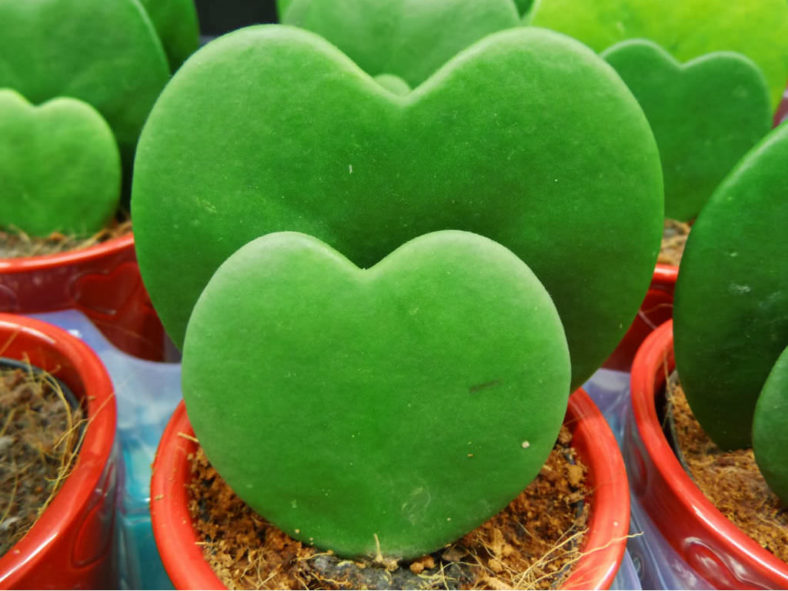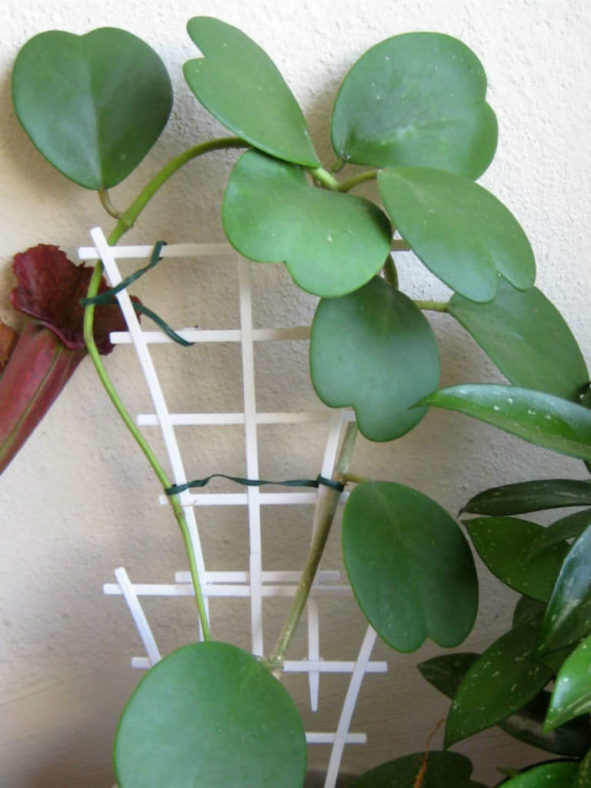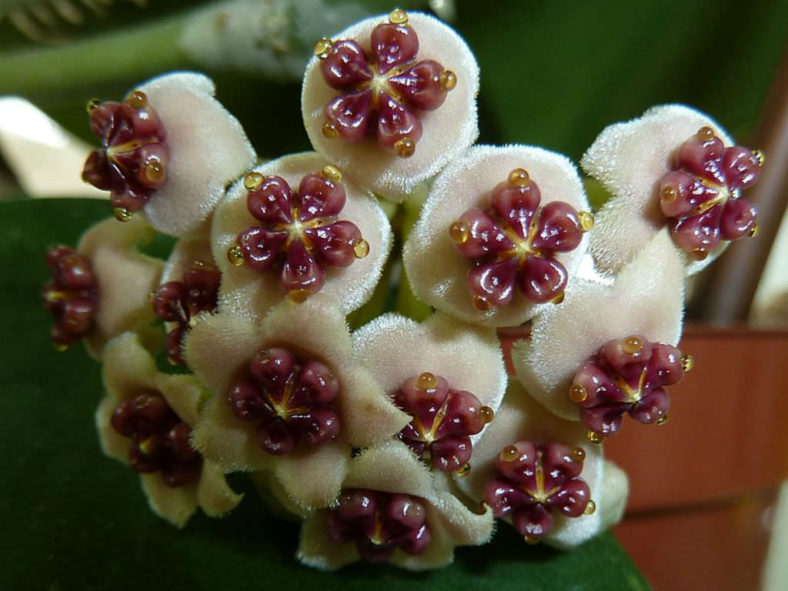Scientific Name
Hoya kerrii Craib
Common Name(s)
Heart Leaf, Heart-shaped Hoya, Lucky Hearts, Porcelain Flower, Sweetheart Hoya, Sweetheart Plant, Valentine Hoya, Wax Hearts, Wax Plant
Synonym(s)
Hoya obovata subsp. kerrii, Hoya obovata var. kerrii
Scientific Classification
Family: Apocynaceae
Subfamily: Asclepiadoideae
Tribe: Marsdenieae
Genus: Hoya
Etymology
The specific epithet "kerrii (KER-ee-eye) honors Arthur Francis George Kerr (1877-1942), an Irish physician and botanist.
Origin
The native range of Hoya kerrii is from South China, Vietnam, Laos, Cambodia, and Thailand to the Indonesian island of Java.
Description
Hoya kerrii is a climbing plant with slender stout stems and succulent heart-shaped leaves. The stems grow up to 13 feet (4 m) long and up to 0.3 inches (0.7 cm) in diameter. They attach themselves to the host tree with aerial roots in their habitat. Leaves are dark green, with an opposite arrangement, up to 4.8 inches (12 cm) long, up to 3.8 inches (9.5 cm) wide, and up 0.2 inches (0.5 cm) thick. The petiole is up to 0.8 inches (2 cm) long and connected to the pointed part of the leaves. The long-lasting waxy flowers are up to 0.5 inches (1.3 cm) across and have pinkish-brown to purplish-brown corona and white corolla. They appear arranged in umbels along the stems in summer and release their fragrance at night.
The plant is most commonly sold only as a single-rooted leaf around Valentine's Day.

Hardiness
USDA hardiness zones 11a to 11b: from 40 °F (+4.4 °C) to 50 °F (+10 °C).
How to Grow and Care
Hoyas don't ask for much beyond the well-draining soil and the warm, humid conditions that many tropical flowers crave. They don't like wet feet or heavy soil, and as many grow as epiphytes in nature. Give them at least a half-day of sunshine and bring them indoors when temperatures drop below 50 °F (10 °C).
When your Hoya finishes blooming, leave the flower stalk, as it may produce new flowers. Removing the stalk forces the plant to produce a new stalk, which delays blooming and wastes its energy. These plants are light feeders, and a monthly drink of compost tea or dilute fish emulsion provides all the nutrition these tropicals need. Hoyas like the security of a snug pot, and plants that are a bit root-bound will flower more prolifically than swimming around in a giant pot.
Propagate Hoyas by cuttings of top growth or by leaf cuttings. The average cutting or leaf will produce a blooming plant in 2 years or less. The easiest method of propagation is by layering.
Learn more at How to Grow and Care for Hoya.
Cultivars
Links
- Back to genus Hoya
- Succupedia: Browse succulents by Scientific Name, Common Name, Genus, Family, USDA Hardiness Zone, Origin, or cacti by Genus
Photo Gallery
Click on a photo to see a larger version.



